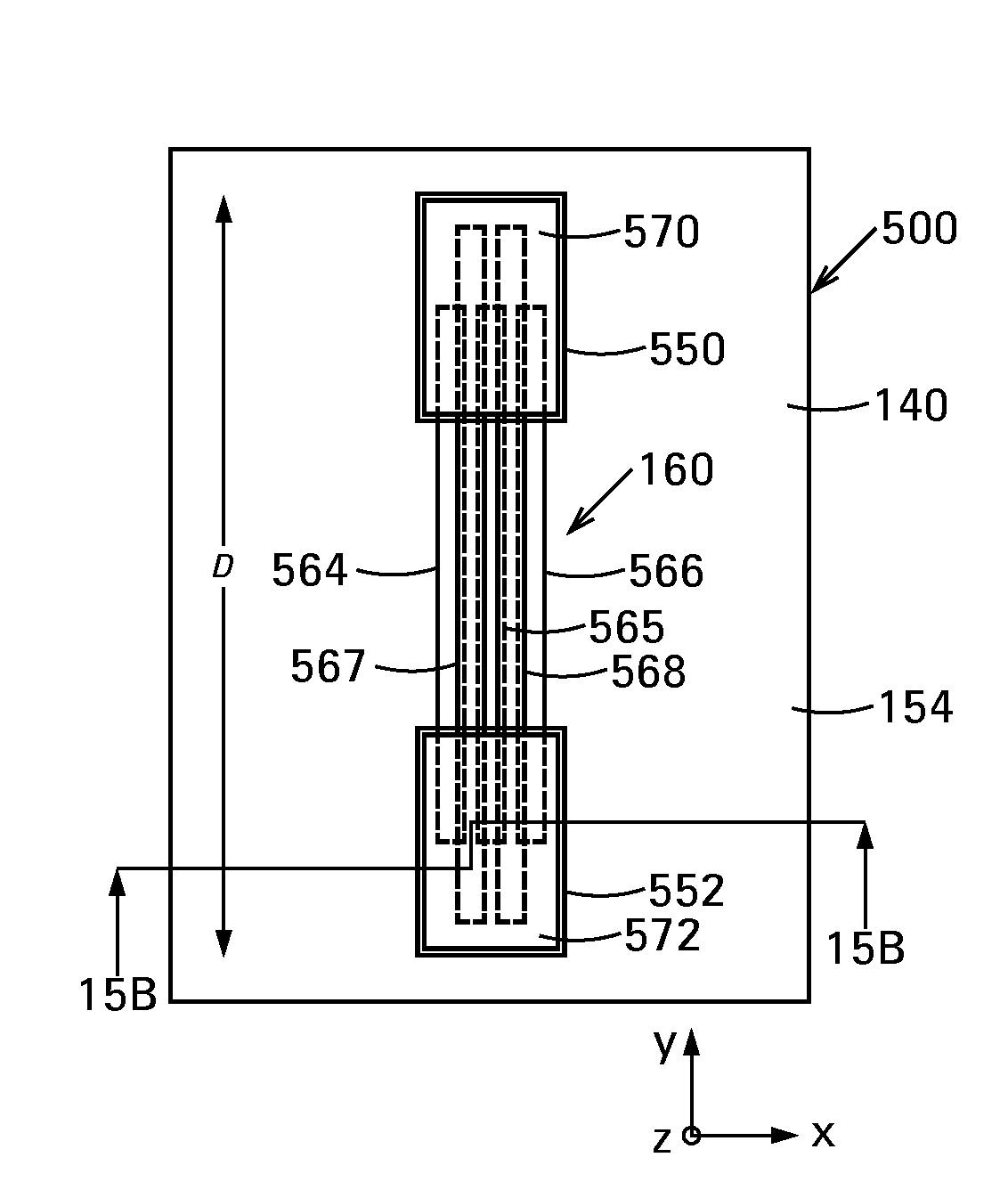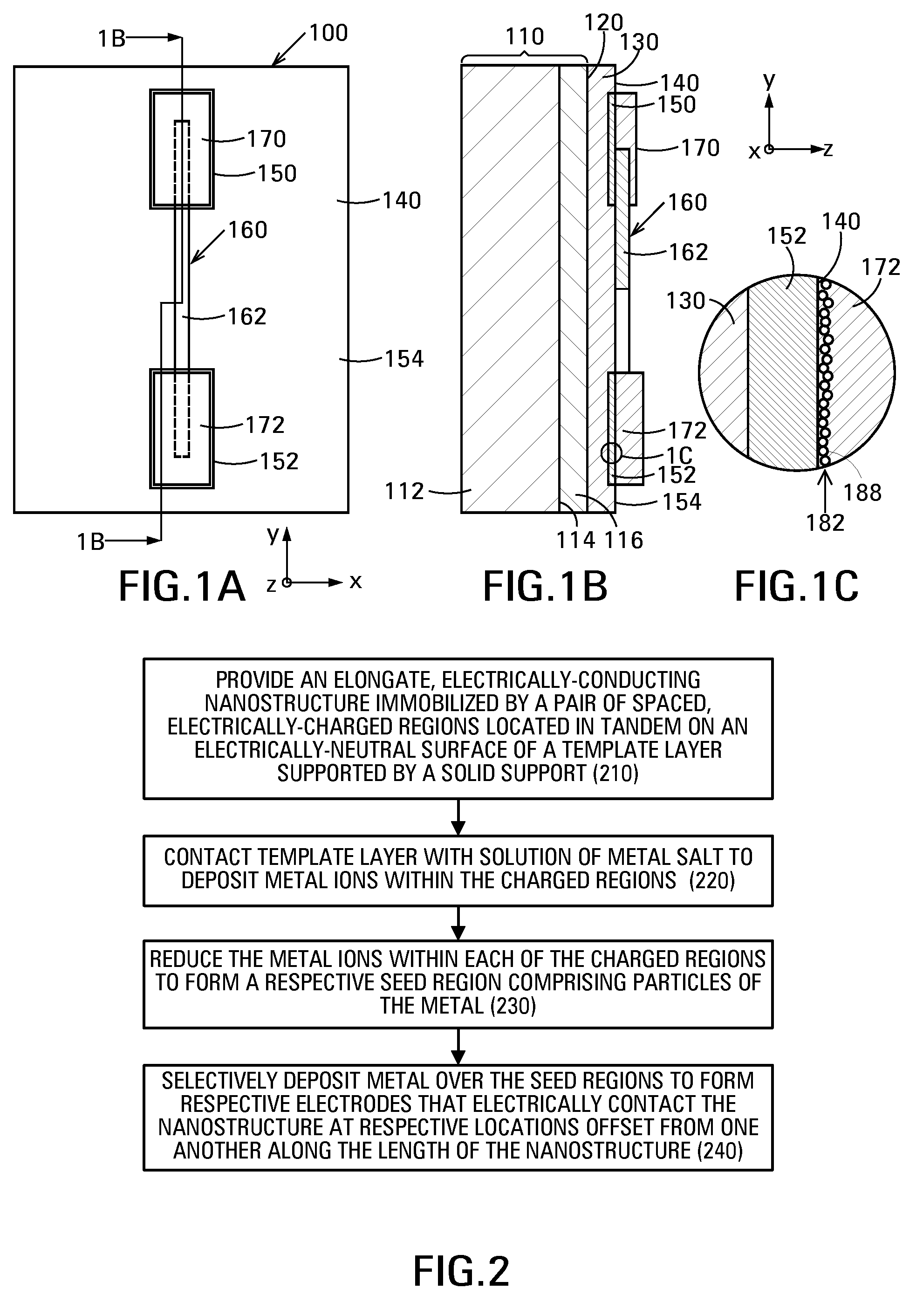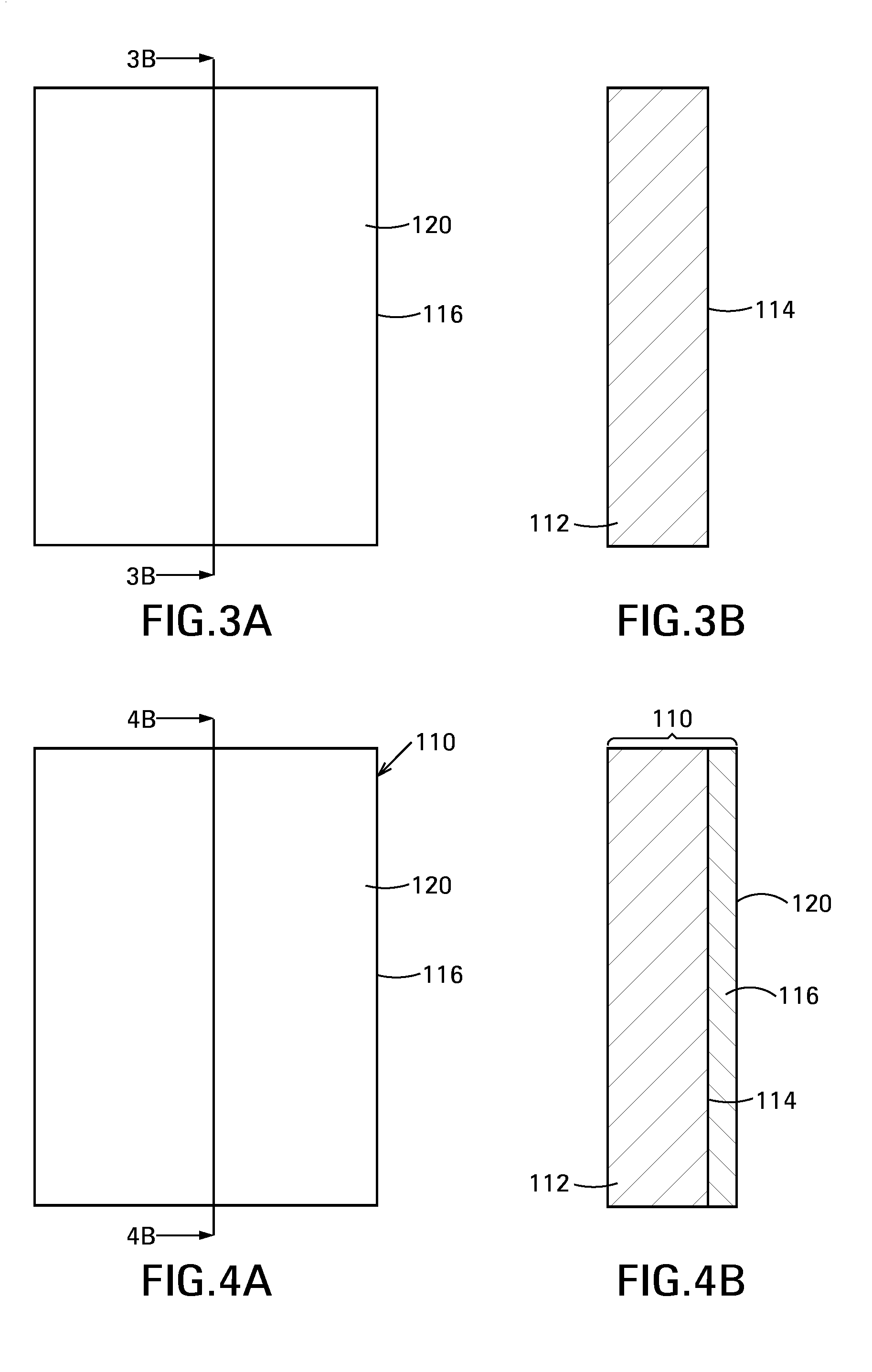Nanostructure-Based Electronic Device
- Summary
- Abstract
- Description
- Claims
- Application Information
AI Technical Summary
Problems solved by technology
Method used
Image
Examples
Embodiment Construction
[0021]Embodiments of the invention provide a nanostructure-based electronic device, such as a carbon nanotube field-effect transistor (CNTFET), that comprises a solid support having a support surface, and an organic template layer on the support surface. The template layer has a surface comprising a pair of spaced, electrically-charged regions arranged in tandem in an electrically-neutral background. The electronic device additionally comprises an elongate, electrically-conducting nanostructure extending between the charged regions, and electrodes on the surface of the template layer at least co-extensive with the charged regions and in electrical contact with the nanostructure.
[0022]FIGS. 1A and 1B are respectively a plan view and a cross-sectional view showing an example of a nanostructure-based electronic device 100 in accordance with an embodiment of the invention. Electronic device 100 is composed of a solid support 110 having a support surface 120. An organic template layer 13...
PUM
 Login to view more
Login to view more Abstract
Description
Claims
Application Information
 Login to view more
Login to view more - R&D Engineer
- R&D Manager
- IP Professional
- Industry Leading Data Capabilities
- Powerful AI technology
- Patent DNA Extraction
Browse by: Latest US Patents, China's latest patents, Technical Efficacy Thesaurus, Application Domain, Technology Topic.
© 2024 PatSnap. All rights reserved.Legal|Privacy policy|Modern Slavery Act Transparency Statement|Sitemap



